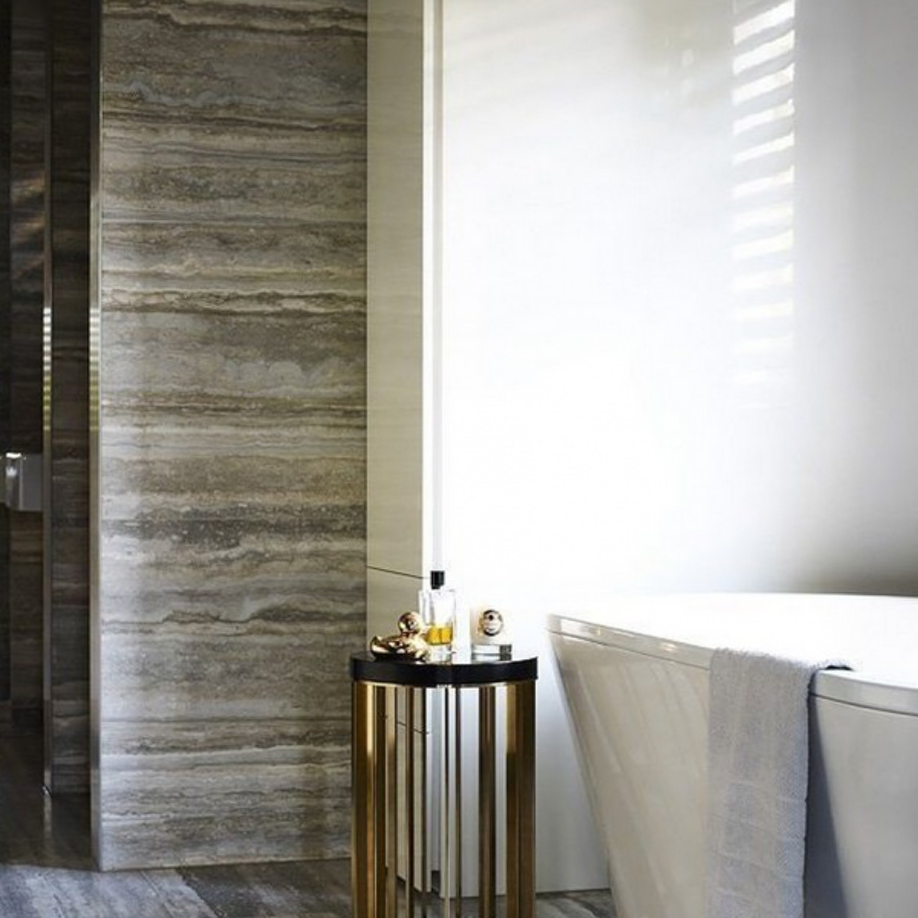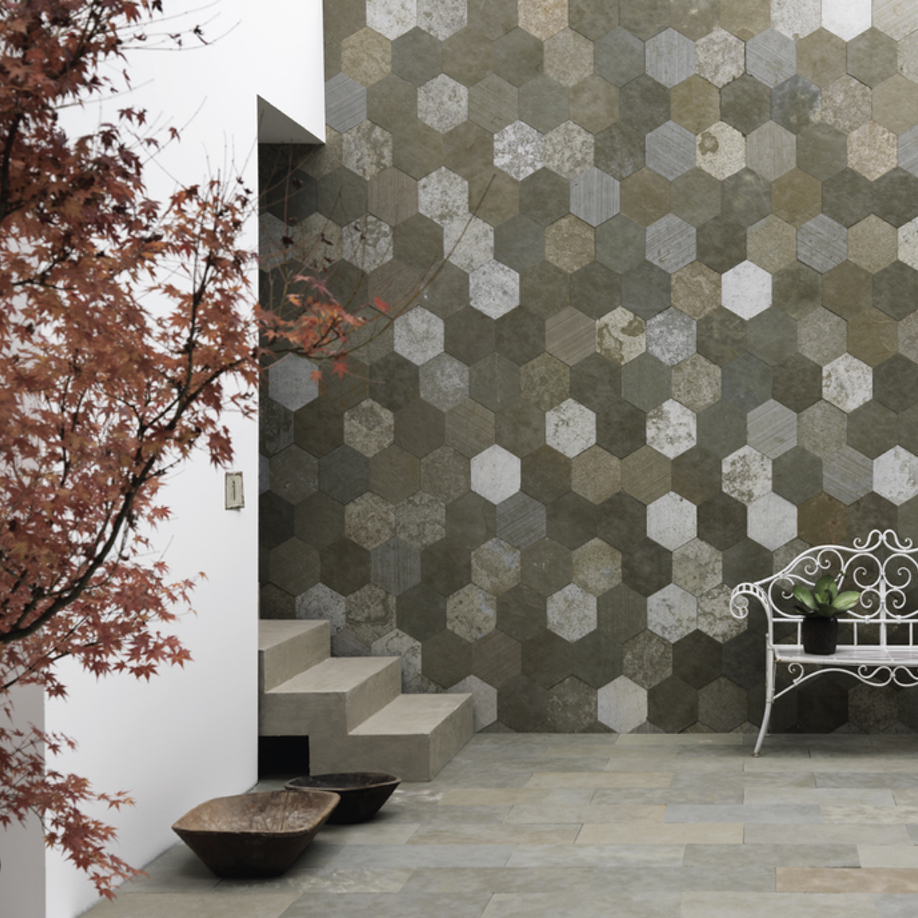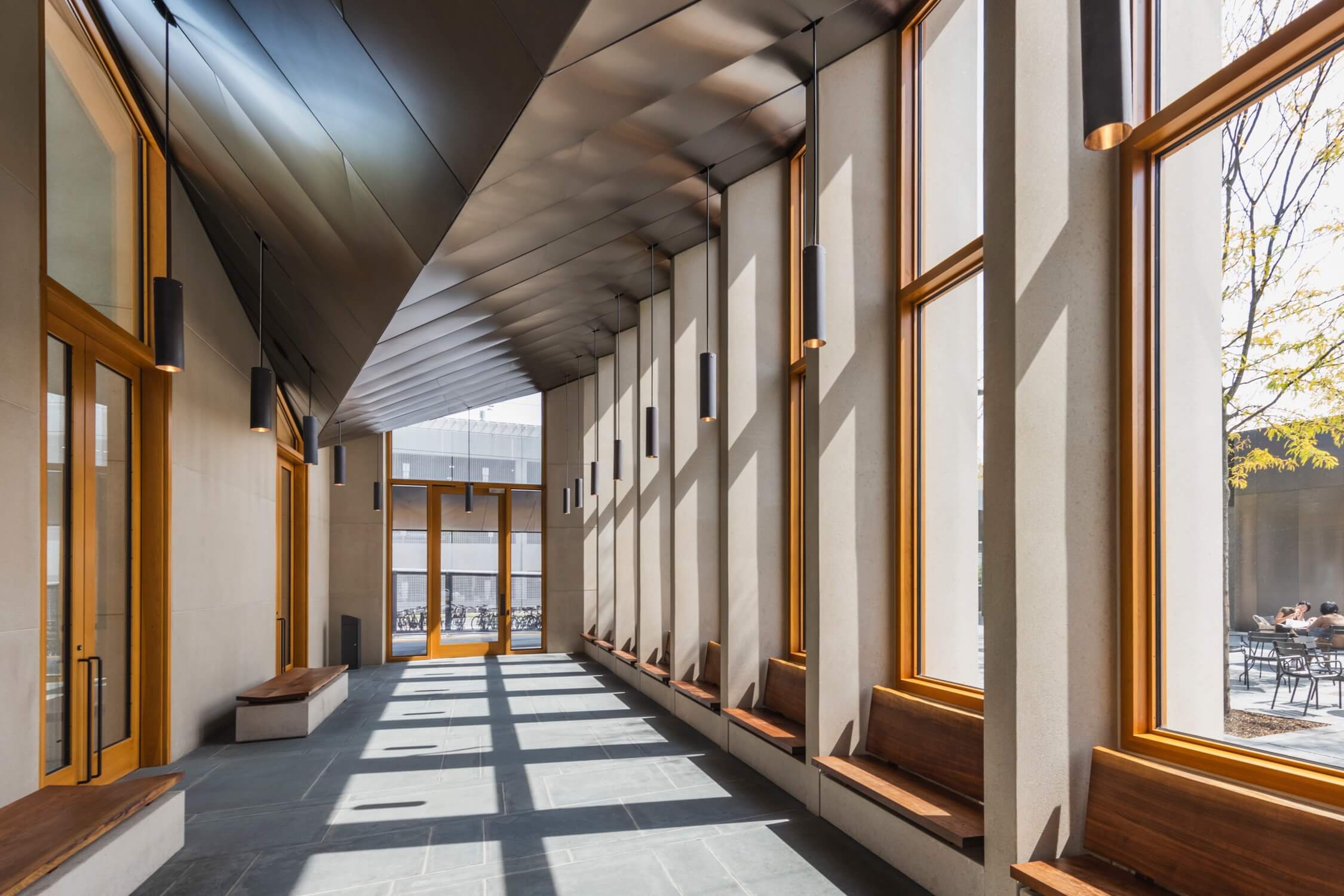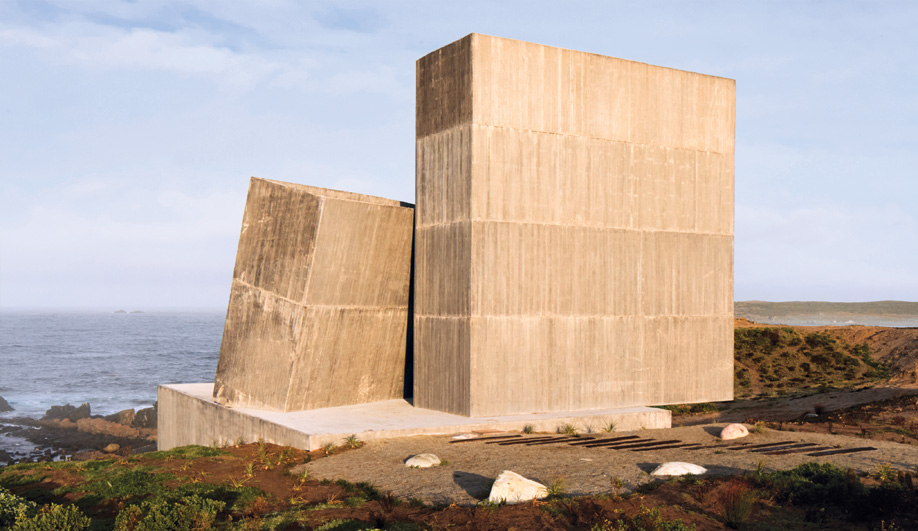
Natural stone is durable, abrasion-resistant and suitable for both indoor and outdoor environments. Here’s how to use marble, limestone travertine, slate, basalt and granite in your projects.
Porcelain, ceramic, concrete and laminate tiles each have distinct upsides, but few materials match the timelessness of natural stone. As surfacing, it has continued to intrigue designers by pushing both aesthetic and technological boundaries – and though a veined marble will never go out of style, materials such as basalt and slate can provide stunning, often surprising results. Durable, abrasion-resistant and suitable for indoor and outdoor environments, natural stone remains a go-to option for countless applications – and it remains the cornerstone of companies like Stone Tile, which are reimagining how surfacing can look and feel.
Here’s a primer on six different types of natural stone surfacing – and how they can be used.
Marble

Photo: Platform Building Group
Most don’t need to be reminded of marble’s vein-glorious reputation. Whether polished or honed, the material adds dramatic appeal to a project – the impact of Nero Marquina, Calacatta and Carrara marble are legendary. Indeed, when paired thoughtfully, marble can deliver liberal amounts of visual intrigue. In the above project by Delia Mamann Interior Design, a Venetian White bathtub is paired with floor-to-ceiling Dolomite White tiles to create a refreshing, statement-making bathroom.
Limestone

In a word, limestone is elegant. Made from hard, sedimentary stone, the variance in limestone can be vast, and accordingly, suitable for a wide range of projects: some variants feature visible marbling. Others feature bold colours – blue limestone is especially striking. Others feature a subtle, fine grain that offer sophisticated tactility. Whether in strips, pebbles or stacks, limestone delivers understated appeal – like, for example, the Beach Sand surfacing featured in the reception area above.
Travertine

For warm environments, travertine is a standout. As a time-tested building material – it can be found widely in Roman architecture – travertine is a sedimentary rock, famed for its character-filled pitting, patterns and speckling. Colouring tends to be on the earthy side: tan, beige and even rusty travertine surfacing can be used for inviting environments. It’s suitable for spaces that require equal amount of dignity and character – Stone Tile’s Black Sea, pictured in the bathroom above, is a perfect example.
Slate

Slate is cool and rough-hewn, and as such, is frequently celebrated in minimalist, contemporary circles. Made from fragments of silt and clay under high temperatures and pressure, slate is defined by its natural cleft – making it ideal in for spaces that get slippery – and unique patina. (Fun fact: it also retains heat, which makes it a popular material for saunas.) Available in monochromatic palettes, it adds a rustic dimension – even when it’s used in a decidedly modern hexagonal grid.
Basalt

Basalt is a volcanic stone that, at is core, is cooled-down magma. It’s an ancient material, but one that is used heavily in modern architecture: bold, dark and smooth, it’s a surfacing renowned for its sleekness. Due to its consistency and fine grain, Basalt is a popular choice for a wide range of environments, including terraces, kitchens and bathrooms. Stone Tile’s Black Dragon was used in the bathroom project above.
Granite

There’s a reason granite slabs are popular in kitchens: the material is heat- and bacteria-resistant, making it an ideal solution for prep and dining spaces. Made from igneous rock with dramatic visible grains, granite – made from quartz, mica, and feldspar – is typically found in white, black or pink variations. (Though that’s not the rule: muscovite has a golden sheen, and amphibole can be green.) Sealed granite is flat and is non-porous, making it ideal for countertops, though Silver Galaxy, above, could be used beyond kitchen and bathroom applications.
This content was published by Azure on behalf of Stone Tile.




